Biomass energy, biofuel, biomass electricity in Canada – what do all these terms mean and how do they benefit Canada as electricity and fuel? Around 2% of Canada’s electricity comes from biomass. Biomass is the third largest renewable electricity source in Canada, and as an example – the electricity generated from biomass increased by 54% from 2005 to 2015. Most biomass plants are in BC, Alberta, Ontario, Quebec, and New Brunswick.
Learn more: Biogas in Canada: The Pros and Cons of Renewable Natural Gas
The Canadian government website has its own resources for biomass information and how industries can benefit from them. In this article, we will help you parse through everything and help you better understand what biomass is, what part it plays in helping to combat climate change, the potential for cheaper energy/heat/electricity across Canada, and to explain what benefit biomass, biofuels, and bioenergy can benefit the country as a whole from coast to coast while utilizing our natural resources in a more effective way.
Canada is one of the 17 countries that participate in the research activities of the International Energy Agency (IEA) Bioenergy, which is an organization whose focus is improving the cooperation and information sharing between countries with national programs of bioenergy research, deployment, and development.
As a country, we contribute knowledge, expertise, and funds to IEA Bioenergy and in return, have access to research results and scientific exchanges such as clonal material from other contributing member countries. IEA has also contributed to research in Canada, for example, information from IEA has assisted with projects that are studying the sustainability of forest residues and biocomponents for bioenergy production, including any potential effects on land used to change over to enhanced bioenergy productions.
We are also involved in nine bioenergy tasks, with Task 43 having the goal of promoting sound bioenergy development through well-informed and research-based decisions by business, government, and other such sectors.
What is biomass energy and how is Canada involved?
Biomass energy is an organic material that comes from recently deceased plants and animals and contains energy that once came from the sun. Bioenergy is energy produced from renewable, biological sources such as biomass. Biomass itself is a plant material that can be turned into fuel (which is also known as biofuel when it is made from biological material) that supplies electricity and heat, and bioenergy can be obtained from many different forms of biofuels.
Examples of biomass in Canada can be wood, waste from crops and farming, landfill gas, and other municipal solid waste – these are the most common types within the country, with industrial wood waste being the most common across the country. Included are liquid biofuels used to run motor vehicles and forest wood residue used to run pulp mills and other such industrial operations.
Canada’s forests represent a tremendously abundant source of biomass, as it makes up for most of the country’s landscape and use for fuels and pulp. Biomass is a resource that is rapidly growing as an important source for the growing global ‘bioeconomy’ as analysts have called it. All the trees and plants are used including roots, trunks, branches, bark, needles, leaves, and even fruits.
Biomass Sources in Canada
As stated previously, there are several sources of biomass and the subsequent biomass energy that can be used. Forest biomass, which is Canada’s most common source, comes from many areas:
- Material from stand thinning.
- Harvest residues and leftover waste.
- Trees that are of harvestable age but are also not suitable for lumber.
- Trees that were killed and destroyed by fires, insects, and disease.
- Trees from plantations specifically grown to provide biomass for conversion into biofuels.
- By-products of industrial processes and wood residues, such as chips, bark, and sawdust collected – this also includes pulp residues such as ‘black liquors’ that are left over from the pulping process itself.
For decades, biomass residues have been a large energy source for the forestry industry and providing that energy fuels the production of pulp, paper, and lumber. Most pulp and paper mills, as an example, will use the residues left over from the pulping process and in turn produce electrical power and heat to run part of their operations. Others may burn bark and similar wood waste for their energy. Substantial amounts of material that otherwise may have gone to waste are being utilized and are giving back to the cycle.
Modern-day biomass energy (bioenergy) has become an interest as a renewable and environmentally friendly alternative to other types of fuels, especially fossil fuels – and doubly so within Canada where the country has a large abundance of natural resources that are renewable compared to other countries and can benefit greatly from making the switch and reducing Canada’s reliance on fossil fuels. In addition to creating energy, forest biomass is being used at an increased rate to create a wide range of renewable bioproducts as well, such as industrial chemicals, pharmaceuticals, textiles, personal care products, renewable materials, and other manufactured goods that otherwise would be made with harmful ingredients that also contribute to a larger carbon footprint.
Using biomass this way as well has the potential to generate higher value returns than using it just for creating energy. CFS (Canadian Forest Service) researchers are undertaking research to determine how much biomass, sorted by species of tree and ecosystem type, can be safely removed from forests while still maintaining healthy ecological functions and continuing the cycle without any detrimental effects.
Other areas of research include developing methods to grow forest biomass faster and harvesting it more efficiently while improving systems to transport, process, and store it as well. Working with their counterparts in provincial and territorial governments, universities, and industries to explore a range of biomass-related and derived products and technologies for the future. For example, the NRCan-funded Transformative Technologies program, FPInnovations is supporting the development of emerging and promising breakthrough technologies and products, such as cross-laminated lumber and nanocrystalline cellulose.
The Great Lakes Forestry Centre has CFS researchers developing new forest biomaterials and new biochemicals. In biotechnology, CFS is exploring a range of applications for improving forest regeneration and protecting forests through biological pest control, conserving forests and their genetic diversity. Bio-Pathways Project is helping industries understand the opportunities that will allow them to maximize the value derived from biomass and how to identify new markets for biochemicals and other new bioproducts that emerge from the green and renewable energy sectors/economy.
How does biomass benefit Canada, and what technologies are used?
The potential for biomass to benefit Canada globally and nationally for consumers is enormous. It was analyzed in the industry-led Bio-Pathways Project that began in 2009. Biomass is the basis for making renewable energy, other bioproducts, and biofuels that are rapidly replacing fossil-fuel-based energy and projects. The benefits will come in part from using the by-products of traditional forestry processes to create new high-value-added bioproducts.
To date, the majority of processed biomass comes from manufacturing residues. The other sources, in comparison to that, remain largely untapped and can be monumental in how we access electricity and heat going forward and reducing our fossil fuel and carbon footprint, helping to reduce climate change. Benefitting from the processes and waste that are already being created makes sense to move forward to, especially since forest biomass can be converted into a variety of products, instead of just traditional lumber and paper that most don’t think of unless you work in the forestry sector.
Canadian researchers are now working underway to develop new products and technologies that will maximize the value that is derived from forest biomass, and through initiatives such as the Transformative Technologies Program that is being delivered by FPInnovations, on behalf of Natural Resources of Canada (NRcan) itself, these new and innovative products can possible be available in the future sooner than we think.
Canada’s industries are already making good use of biomass that comes in the form of industrial residue. Energy produced from mill residues currently accounts for around 62% of the pulp and paper industry’s energy needs and meets them. Overall, contributions of forest biomass to Canada’s secondary energy uses have increased since the 1970s from 3.5% upwards to 6.5% today – with that number exponentially growing as the research and use of biofuel, bioenergy, and biomass are a growing important step in reducing climate change and utilizing Canada’s resources in a renewable, greener, and cleaner fashion than before.











